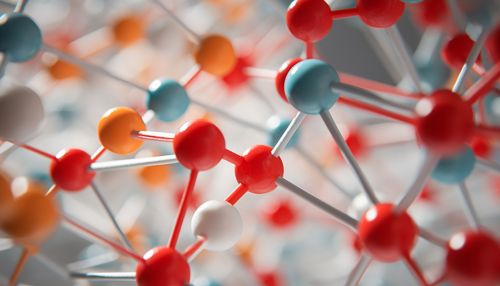Host-Guest Chemistry
Introduction
Host-guest chemistry is a branch of supramolecular chemistry that focuses on the interaction between two or more molecules, where one (the 'guest') is contained within the other (the 'host'). This field of study is characterized by the design and synthesis of host molecules with cavities or clefts into which guest molecules can fit.


History and Development
The concept of host-guest chemistry was first introduced by Donald J. Cram and Charles J. Pedersen in the 1960s. Their pioneering work on crown ethers and cryptands, which are classic examples of host molecules, led to the development of this field. They were awarded the Nobel Prize in Chemistry in 1987 for their contributions.
Principles of Host-Guest Chemistry
Host-guest chemistry is governed by non-covalent interactions such as hydrogen bonding, van der Waals forces, electrostatic interactions, and hydrophobic effects. These interactions are weaker than covalent bonds, but they play a crucial role in the formation and stability of host-guest complexes.
Types of Host-Guest Systems
There are various types of host-guest systems, each with unique properties and applications. Some of the most common types include:
Crown Ethers and Cryptands
Crown ethers and cryptands are cyclic compounds that can encapsulate alkali and alkaline earth metal ions. They are used in the extraction and separation of these ions.
Cyclodextrins
Cyclodextrins are cyclic oligosaccharides that can encapsulate a variety of organic molecules. They are used in the pharmaceutical industry to improve the solubility and stability of drugs.
Calixarenes
Calixarenes are macrocyclic compounds that can encapsulate small molecules and ions. They are used in sensor technology and molecular recognition.
Cucurbiturils
Cucurbiturils are pumpkin-shaped molecules that can encapsulate small organic molecules. They are used in drug delivery and supramolecular catalysis.
Applications of Host-Guest Chemistry
Host-guest chemistry has a wide range of applications in various fields such as:
Drug Delivery
In the field of drug delivery, host-guest chemistry is used to improve the solubility, stability, and bioavailability of drugs. For example, cyclodextrins are used to encapsulate hydrophobic drugs, thereby increasing their solubility in water.
Sensor Technology
In sensor technology, host-guest chemistry is used to design sensors for the detection of specific molecules or ions. For example, calixarenes are used to design sensors for the detection of toxic metal ions.
Molecular Recognition
In molecular recognition, host-guest chemistry is used to design systems that can selectively bind to specific molecules or ions. This is crucial in the development of biosensors and diagnostic tools.
Supramolecular Catalysis
In supramolecular catalysis, host-guest chemistry is used to design catalysts that can selectively catalyze specific reactions. For example, cucurbiturils are used to design catalysts for the selective oxidation of organic compounds.
Future Perspectives
The field of host-guest chemistry continues to evolve and expand, with new host-guest systems being discovered and developed. These systems have the potential to revolutionize various fields such as drug delivery, sensor technology, molecular recognition, and supramolecular catalysis. As our understanding of host-guest chemistry deepens, we can expect to see more innovative and impactful applications in the future.
